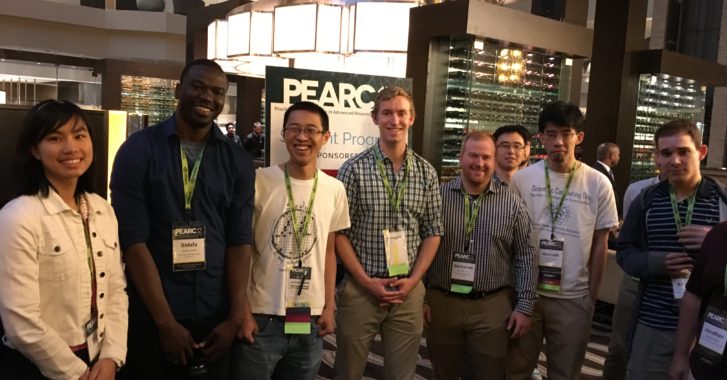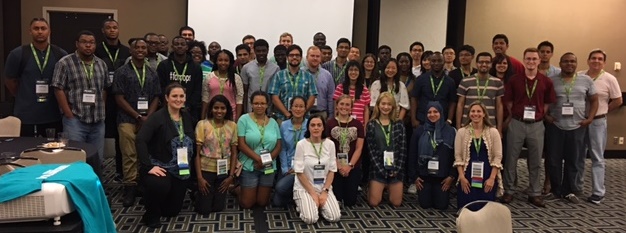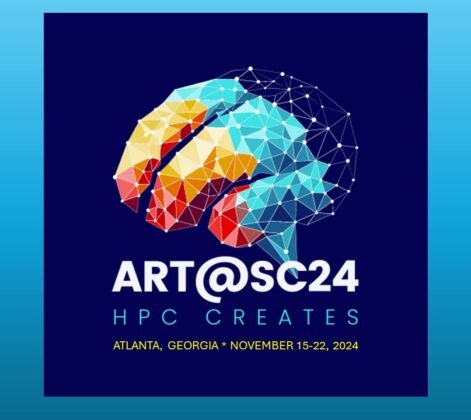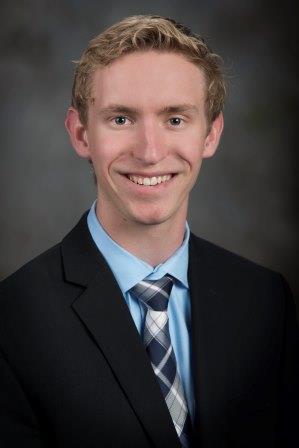 By Bobby Hollingsworth (V-Tech/Harvard), Guest Blogger
By Bobby Hollingsworth (V-Tech/Harvard), Guest Blogger
I left Virginia Tech on the morning of July 9 eager to take part in the PEARC17 Student Program. As someone who works in experimental and applied computational biology, I was a bit anxious to throw myself into an environment of computational researchers and high-performance computing specialists. My research generally brings me in contact with chemists and biologists — meaning PEARC17 is definitely an experience out of my comfort zone.
On the SuperShuttle ride to the hotel from the New Orleans airport, I talked to Ayesha, a student from Albany State University. Her research in computational biology is exciting and meeting her put to ease my irrational fears of being the only biologically-oriented person at the conference.
I met my roommate Zach soon after arriving at the conference hotel. We then went to the student orientation, where we first heard from a New Orleans police officer about public safety, and two FBI agents about careers in cybersecurity. Elizabeth Leake from STEM-Trek joined remotely and shared details of STEM-Trek’s mission to foster scientific collaboration through conference travel. STEM-Trek partners with sponsors, such as Google, Micron Foundation, and Science Gateways Community Institute. It’s always great to hear that the computational community supports young scientists!
Although light appetizers were served, a lot of us were still famished from our travels, so we congregated at Walk-Ons, a restaurant just a few blocks away from the Hyatt. After great conversation with a dynamic group representing diverse interests and universities, we made a pact to meet up at the hotel gym the next day and discuss plans to tour New Orleans in our free time.
The conference kicked off with tutorial day, which mostly involved hands-on informational sessions relating to computing. Following breakfast, Zach and I attended the “Introduction to Python” session to acquire a background prior to modeling day. We were met with familiar faces from Walk-Ons and the student orientation as we blew through topics ranging from nested loops to data parsing.
I enjoyed the experiential learning aspect of the tutorial in that there was lecturing interspersed with small coding challenges that applied new Python concepts. Some of the Python graphing exercises gave me an idea for a diagram that I plan to integrate into my research back at Virginia Tech.
In the afternoon I volunteered at two sessions: “XSEDE New User Tutorial: Using Science Gateways” and “Enabling Science Beyond the Campus Edge: HPC Integration with the Open Science Grid.” I was fascinated by the applications of scientific gateways — I did not fully appreciate how publicly accessible high performance gateways have already impacted my research, from servers such as SwissModel to the Protein Data Bank.
Dr. Mark Miller presented on CIPRES, a publicly (albeit vetted) accessible computing resource for generating phylogenic trees. On the front end, web servers, like CIPRES, provide a facile interface that eliminates the need for scientists who do not specialize in computing to solve computationally demanding problems. This then democratizes access to high performance computing for the nonspecialist. I really appreciate these efforts and love seeing such collaboration in the computational research community.
In the evening, around seven of the students from Walk-Ons kept our commitment and squeezed in a quick run to the hotel gym prior to dinner. On the elevator I had a purely coincidental run-in with Bob Freeman from Harvard’s computing center, and we talked about the resources that I may be using next year.
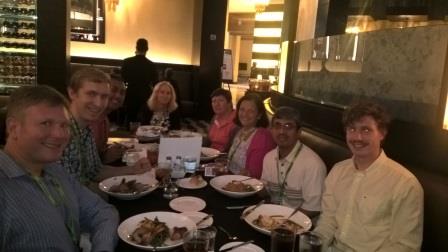 At dinner, we ate with our assigned mentors for the conference. My mentor, Dr. Sridhar Malkaram, does bioinformatics research at West Virginia State University — an excellent match, not to mention he is close to home and does biological computing! We compared notes on molecular dynamics simulations, as my current research area happened to be a component of Dr. Malkaram’s Ph.D. research. Simulation speeds have dramatically increased since his graduate studies: what once took 6 months to generate 50 nanoseconds of data now takes us less than a day. All-in-all, the first day of the conference was incredibly fruitful and I am excited for modeling day and my poster presentation tomorrow evening.
At dinner, we ate with our assigned mentors for the conference. My mentor, Dr. Sridhar Malkaram, does bioinformatics research at West Virginia State University — an excellent match, not to mention he is close to home and does biological computing! We compared notes on molecular dynamics simulations, as my current research area happened to be a component of Dr. Malkaram’s Ph.D. research. Simulation speeds have dramatically increased since his graduate studies: what once took 6 months to generate 50 nanoseconds of data now takes us less than a day. All-in-all, the first day of the conference was incredibly fruitful and I am excited for modeling day and my poster presentation tomorrow evening.
______
The PEARC17 Student Program Chair is Alana Romanella (Virginia Tech). Program committee members include: Kate Cahill (Oklahoma State University); Peter Enstrom (NCSA); Ricardo Gonzalez (University of Puerto Rico/Mayagüez); Elizabeth Leake (STEM-Trek); Melissa Romanus (Rutgers); Semir Sarajilik (Georgia State University); and Ester Soriano (NCSA).

